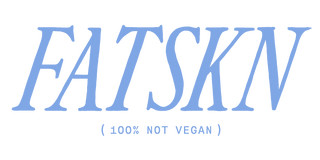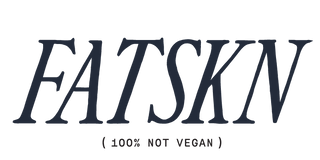Growing a baby is no small thing.
And it doesn’t come without challenges, of course.
The morning sickness, brain fog, and food cravings are all part of the deal. It’s well worth it when you finally get to hold your baby on the other side.
But nothing can prepare you for the burden of PUPPP rash. Also known as “Pruritic Urticarial Papules and Plaques of Pregnancy.”
This sleep-stealing itch can make you wonder if your body is literally allergic to pregnancy. If you know, you know.
Let’s dig into what could be behind this all-too-common rash and how you can find lasting relief (yes, before your due date).
What is PUPPP rash?
Most women will define PUPPP rash as, well, torture.
It's essentially an extremely itchy, hive-like rash that usually flares up in the third trimester but can occur at any point during pregnancy.
The bumpy skin lesions are generally skin-colored, pink, or dark red, depending on your skin tone.
It’ll often form in areas where the skin is weakened due to stretching. This is why mothers will first notice it around stretch marks before it starts to spread outward to other areas. *Though some mild irritation near stretch marks is normal, if you notice extreme itching that starts to spread, it could be a sign of PUPPP.
But don’t worry, as annoying as it is, PUPPP poses no threat to you or your baby (besides maybe your sanity).
It’s more common for first-time mothers or those carrying multiples– more on that in a minute.
*NOTE: some rashes during pregnancy may be more serious than PUPPP, so it’s important to get it checked by your midwife or OBGYN (or holistic health advisor of choice) to be sure that’s actually what you have.
What really causes PUPPP rash on the skin?
No one really knows for sure.
The general consensus is that there may be a genetic component that makes some women more sensitive to their baby’s fetal cells.
But as you know, we don’t typically follow the general consensus around here.
Another theory suggests that PUPPP rash may be triggered by all the physiological changes happening in the body during pregnancy. And this makes a lot more sense.
When a woman falls pregnant, her blood volume doubles, her estrogen and progesterone spike, and her baby releases human chorionic gonadotropin hormone (hCG). (1)
All the while, her liver must continue to metabolize and filter everything to keep her body functioning properly.
But an overworked liver is sluggish.
And a sluggish liver allows toxins to accumulate in the body and leads to all sorts of problems– especially with the skin. (2)
This burden is even heavier when carrying more than one baby.
When inflammation caused by the liver is left to build in the system, it can trigger what's called pruritus, or “an unpleasant sensation that causes the need to scratch.” (3)
Huh.
Could an overloaded liver be behind this unbearable itch? Most likely.
The problem with conventional PUPPP rash treatments.
Women aren’t offered a lot of options after a PUPPP diagnosis.
Treatments are usually limited to either daily oatmeal baths or topical corticosteroids. Yikes.
Neither of these addresses the root of the issue or provides any lasting relief.
So most women are stuck suffering until the baby comes out– making pregnancy feel like an eternity.
But it doesn’t have to be this way.
If the skin is a picture of what's going on inside, then things like acne, psoriasis, eczema, and PUPPP all point to a deeper issue.
Topical treatments will only go so far.
Going the extra mile to support your liver could be the key to healing the itch and finally sleeping through the night.
Healing PUPPP rash from the inside out.
To be clear, pregnancy is not the time for extreme diets or detoxes.
The goal is simply to unburden the liver and provide it with enough nutrients to do its job.
Ways to support the liver and lighten your toxic load for healthier skin:
- Limit ultra-processed foods
I know– this is probably a no-brainer. But it’s too important not to mention. Soft drinks, packaged snacks, processed meats, and pre-prepared dishes often contain artificial flavors and additives that put extra strain on the liver. (4) Focusing on unadulterated, ancestral foods is the way to go.
- Swap out heavily fragranced products for “unscented”
The chemicals that make up synthetic fragrances are not only endocrine-disrupting, but they’ve also been shown to impair liver function. Opt for fragrance-free or use products with ingredients that have naturally occurring scents, like raw cacao butter or unrefined beeswax. (5)
- Keep blood sugar balanced
Long periods without eating starve the body of fuel (glucose) and cause the liver to make its own. The technical term for this process is gluconeogenesis. This is a helpful survival mechanism but is harmful during pregnancy because it spikes cortisol levels and depletes vital nutrients like magnesium, B vitamins, copper, and vitamin A. (6) Remember to follow your cravings and eat balanced meals consisting of high-quality protein, whole-food carbs, and saturated fats to keep blood sugar more stable throughout the day. Pro-tip: if you’re waking up throughout the night, esp around 2-3 am, it could be a sign your liver needs more fuel. Some honey and raw milk usually do the trick.
- Prioritize mineral balance
All electrolytes and minerals are essential for healthy liver function. Magnesium, in particular, helps the body make glutathione (a powerful antioxidant enzyme) that maintains cellular and liver detox pathways. (7, 8) If you're struggling to get enough magnesium or have a more sensitive stomach, stick to topical supplements like our Magnesium Body Lotion, made with genuine Zechstein chloride flakes and grassfed tallow to calm skin and soothe irritation.
- Up your vitamin C
The liver deals with a lot of toxins and free radicals. Reaching for foods higher in antioxidants, especially vitamin C, helps keep free radicals in check and converts toxins into a water-soluble form that's more easily swept away. (9) Vitamin C is also a key player in building collagen, metabolizing protein, and wound healing– making this a must-have for compromised skin.
- Focus on fiber-rich carbs
Fiber is really good at binding to toxins released by the liver as bile in the small intestine. This means they’re less likely to be reabsorbed and accumulate in the liver. It’s also why the raw carrot salad can be so helpful when you’re dealing with gut or skin issues.
Healing foods that relieve + prevent PUPPP flares:
On top of a non-restrictive, animal-based diet, these are some supplemental foods that can provide the liver with even more support.
Disclaimer: Google warns against consuming hibiscus tea during pregnancy– this is based on a study using incredibly high doses. Please do your own research before implementing it into your routine. We don’t recommend lots of experimenting during pregnancy but want to empower you with as much information as possible so you can make the best decisions for your body and your baby.
Natural topicals that seriously soothe the itch.
As you focus on implementing these liver-supportive habits, it’s nice to have safe topical solutions you can lean on in the meantime.
Here are some tried and true remedies to help you get through the day.
Fatskn PUPPP rash relief ritual:
Fatskn Purist Whipped Body Butter– Lightly pat your skin dry with a non-abrasive towel and apply Purist all over to calm, nourish, and protect your skin. This blend of saturated fats is packed with naturally occurring vitamins and minerals that restore the moisture barrier and lower inflammation. This means stronger skin and less itch.
OR
Fatskn Spruce Resin Salve– Finnish cultures have used Spruce resin for centuries for its powerful, medicinal properties. It contains antimicrobial acids and anti-inflammatory lignans that soothe irritation and can even reduce the pain sometimes associated with PUPPP rash. *Fatskn Spruce Resin Salve is a seasonal product. Join our email list to be notified when it’s back in stock!
Wear a light robe or nightdress to void any rubbing on the tender area. Natural fibers are ideal, including bed linens.
And remember, it’ll all be worth it in the end.
.
.
.
As always, while we hope to be a no-nonsense resource, we encourage you to do your own research to find the healthiest options for you and your family.
You can check out our collection of good-for-you, tallow skincare products by clicking the link below. We hope to see you there!
REFERENCES:
- Hormones during preg. Kumar P, Magon N. Hormones in pregnancy. Niger Med J. 2012 Oct;53(4):179-83. doi: 10.4103/0300-1652.107549. PMID: 23661874; PMCID: PMC3640235. https://www.ncbi.nlm.nih.gov/pmc/articles/PMC3640235/
- Dogra S, Jindal R. Cutaneous manifestations of common liver diseases. J Clin Exp Hepatol. 2011 Dec;1(3):177-84. doi: 10.1016/S0973-6883(11)60235-1. Epub 2012 Jan 2. PMID: 25755383; PMCID: PMC3940632. https://pubmed.ncbi.nlm.nih.gov/25755383/
- Hegade VS, Kendrick SF, Rehman J, Jones DE. Itch and liver: management in primary care. Br J Gen Pract. 2015 Jun;65(635):e418-20. doi: 10.3399/bjgp15X685477. PMID: 26009537; PMCID: PMC4439832. https://www.ncbi.nlm.nih.gov/pmc/articles/PMC4439832/
- Konieczna J, Fiol M, Colom A, Martínez-González MÁ, Salas-Salvadó J, Corella D, Soria-Florido MT, Martínez JA, Alonso-Gómez ÁM, Wärnberg J, Vioque J, López-Miranda J, Estruch R, Bernal-López MR, Lapetra J, Serra-Majem L, Bueno-Cavanillas A, Tur JA, Martín Sánchez V, Pintó X, Gaforio JJ, Matía-Martín P, Vidal J, Vázquez C, Daimiel L, Ros E, Bes-Rastrollo M, Pascual M, Sorlí JV, Goday A, Zulet MÁ, Moreno-Rodriguez A, Carmona González FJ, Valls-Enguix R, Janer JM, Garcia-Rios A, Casas R, Gomez-Perez AM, Santos-Lozano JM, Basterra-Gortari FJ, Martínez MÁ, Ortega-Azorin C, Bayó J, Abete I, Salaverria-Lete I, Ruiz-Canela M, Babio N, Carres L, Romaguera D. Does Consumption of Ultra-Processed Foods Matter for Liver Health? Prospective Analysis among Older Adults with Metabolic Syndrome. Nutrients. 2022 Oct 5;14(19):4142. doi: 10.3390/nu14194142. PMID: 36235794; PMCID: PMC9570694. https://www.ncbi.nlm.nih.gov/pmc/articles/PMC9570694/
- Kim S, Lee AY, Cho MH. Inhaled exposure to air fresheners aggravated liver injury in a murine model of nonalcoholic fatty acid liver disease. Heliyon. 2021 Mar 18;7(3):e06452. doi: 10.1016/j.heliyon.2021.e06452. PMID: 33817364; PMCID: PMC8010405. https://www.ncbi.nlm.nih.gov/pmc/articles/PMC8010405/
- Rui L. Energy metabolism in the liver. Compr Physiol. 2014 Jan;4(1):177-97. doi: 10.1002/cphy.c130024. PMID: 24692138; PMCID: PMC4050641.https://www.ncbi.nlm.nih.gov/pmc/articles/PMC4050641/#:~:text=1.2.-,Gluconeogenesis,1
- Liu M, Yang H, Mao Y. Magnesium and liver disease. Ann Transl Med. 2019 Oct;7(20):578. doi: 10.21037/atm.2019.09.70. PMID: 31807559; PMCID: PMC6861788. https://www.ncbi.nlm.nih.gov/pmc/articles/PMC6861788/#:~:text=In%20fact%2C%20every%20100%20mg,hepatitis%20are%20common%20liver%20diseases.
- Hsu JM, Rubenstein B, Paleker AG. Role of magnesium in glutathione metabolism of rat erythrocytes. J Nutr. 1982 Mar;112(3):488-96. doi: 10.1093/jn/112.3.488. PMID: 7062145. https://pubmed.ncbi.nlm.nih.gov/7062145/
- Pehlivan, F. E. (2017). Vitamin C: An Antioxidant Agent. InTech. doi: 10.5772/intechopen.69660 https://www.intechopen.com/chapters/56013
- Xu X, Chen X, Huang Z, Chen D, He J, Zheng P, Chen H, Luo J, Luo Y, Yu B, Yu J. Effects of Dietary Apple Polyphenols Supplementation on Hepatic Fat Deposition and Antioxidant Capacity in Finishing Pigs. Animals (Basel). 2019 Nov 8;9(11):937. doi: 10.3390/ani9110937. PMID: 31717391; PMCID: PMC6912552. https://www.ncbi.nlm.nih.gov/pmc/articles/PMC6912552/
- Peat, Ray. “Ray Peat, PhD on the Benefits of the Raw Carrot – Functional Performance Systems (FPS).” Www.functionalps.com, www.functionalps.com/blog/2012/09/28/ray-peat-phd-on-the-benefits-of-the-raw-carrot/
- Al-Dashti YA, Holt RR, Keen CL, Hackman RM. Date Palm Fruit (Phoenix dactylifera): Effects on Vascular Health and Future Research Directions. Int J Mol Sci. 2021 Apr 28;22(9):4665. doi: 10.3390/ijms22094665. PMID: 33925062; PMCID: PMC8125345. https://www.ncbi.nlm.nih.gov/pmc/articles/PMC8125345/
- Erguder BI, Kilicoglu SS, Namuslu M, Kilicoglu B, Devrim E, Kismet K, Durak I. Honey prevents hepatic damage induced by obstruction of the common bile duct. World J Gastroenterol. 2008 Jun 21;14(23):3729-32. doi: 10.3748/wjg.14.3729. PMID: 18595140; PMCID: PMC2719236. https://www.ncbi.nlm.nih.gov/pmc/articles/PMC2719236/
- Martinelli I, Micioni Di Bonaventura MV, Moruzzi M, Amantini C, Maggi F, Gabrielli MG, Fruganti A, Marchegiani A, Dini F, Marini C, Polidori C, Lupidi G, Amenta F, Tayebati SK, Cifani C, Tomassoni D. Effects of Prunus cerasus L. Seeds and Juice on Liver Steatosis in an Animal Model of Diet-Induced Obesity. Nutrients. 2020 May 4;12(5):1308. doi: 10.3390/nu12051308. PMID: 32375317; PMCID: PMC7285149. https://www.ncbi.nlm.nih.gov/pmc/articles/PMC7285149/
- Adeyemi DO, Ukwenya VO, Obuotor EM, Adewole SO. Anti-hepatotoxic activities of Hibiscus sabdariffa L. in animal model of streptozotocin diabetes-induced liver damage. BMC Complement Altern Med. 2014 Jul 30;14:277. doi: 10.1186/1472-6882-14-277. PMID: 25077880; PMCID: PMC4131030. https://www.ncbi.nlm.nih.gov/pmc/articles/PMC4131030/


